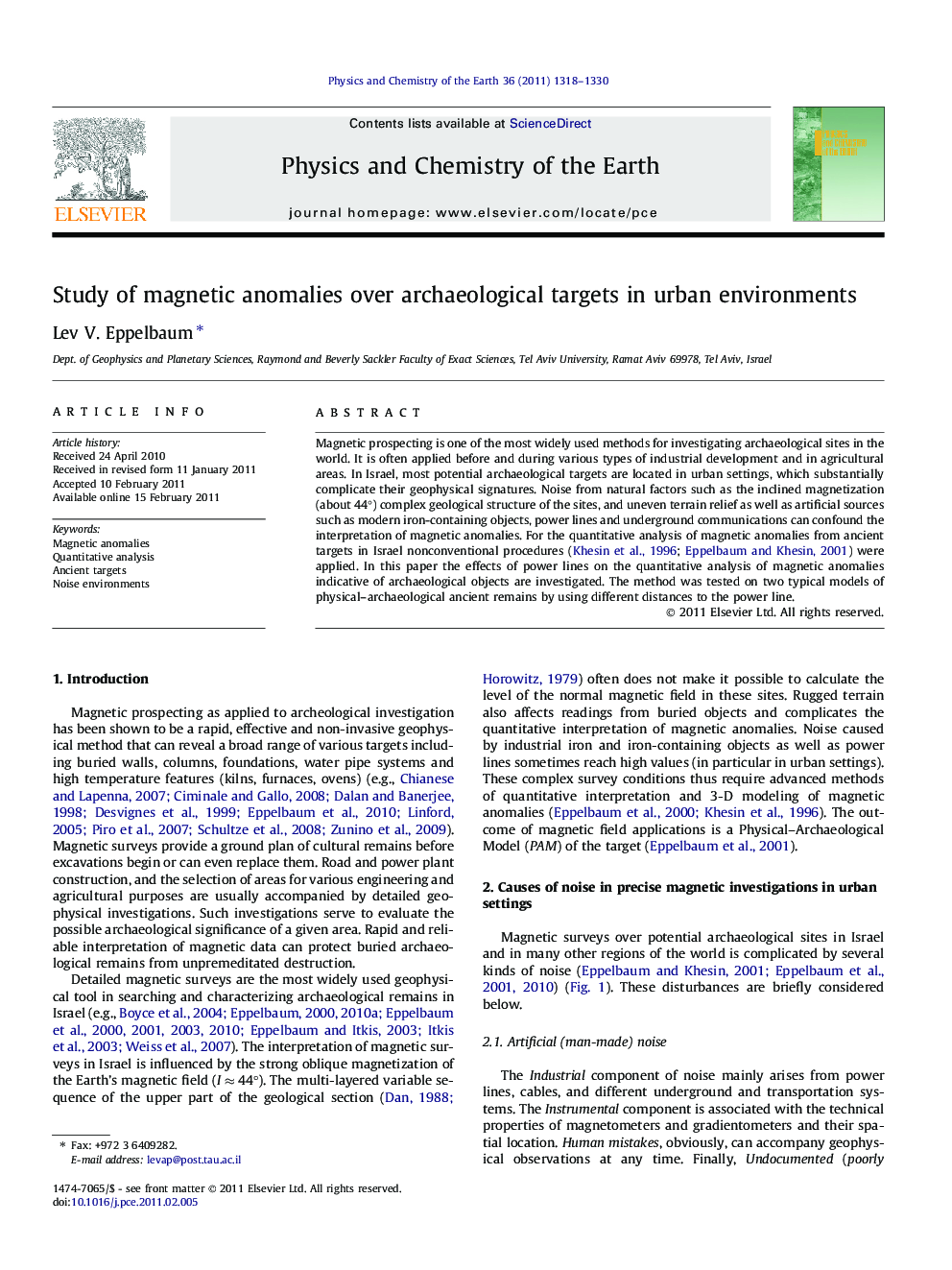| Article ID | Journal | Published Year | Pages | File Type |
|---|---|---|---|---|
| 4721202 | Physics and Chemistry of the Earth, Parts A/B/C | 2011 | 13 Pages |
Magnetic prospecting is one of the most widely used methods for investigating archaeological sites in the world. It is often applied before and during various types of industrial development and in agricultural areas. In Israel, most potential archaeological targets are located in urban settings, which substantially complicate their geophysical signatures. Noise from natural factors such as the inclined magnetization (about 44°) complex geological structure of the sites, and uneven terrain relief as well as artificial sources such as modern iron-containing objects, power lines and underground communications can confound the interpretation of magnetic anomalies. For the quantitative analysis of magnetic anomalies from ancient targets in Israel nonconventional procedures (Khesin et al., 1996; Eppelbaum and Khesin, 2001) were applied. In this paper the effects of power lines on the quantitative analysis of magnetic anomalies indicative of archaeological objects are investigated. The method was tested on two typical models of physical–archaeological ancient remains by using different distances to the power line.
